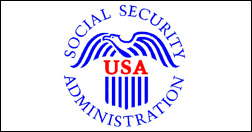
Exclusive
SSA’s leadership program ties past, current, future executives
Reggie Wells, the Social Security Administration’s chief human capital officer and deputy commissioner of the Office of Human Resources, said the agency is seeing...
The Executive Resources Board is the Social Security Administration’s central hub for all things recruitment and retention.
More than 80 percent of all SSA leaders and more than half of all Senior Executive Service members have come through the development program.
Reggie Wells, the Social Security Administration’s chief human capital officer and deputy commissioner of the Office of Human Resources, said the board is the tie that binds all of the agency’s managers.
“We are taking it down to the General Schedule 9 level because our leadership development program is our lowest level national leadership development program, and then we have a national leadership development program that is focused on GS-13s and 14, and then ultimately, our SES candidate development program, which we now have people coming into the developmental program at a 14 or 15 depending on the competition,” Wells said in an exclusive interview with Federal News Radio. “We’ve had the national developmental program for almost a couple of decades now. We have the long and short view of things from a tactical standpoint. Our leadership back in the mid-1990s saw the emerging retirement tsunami and decided it was really important from an organizational standpoint to do a better job of developing the leaders within the organization.”
Only in the last few years has SSA included employees at the GS-9 and GS-10 levels.
Wells said it was a logical decision to expand the program because SSA has a history of promoting managers from within.
“We do a return on the investment. We are actually placing 85 percent of our SES candidate development graduates into executive positions,” he said. “That is either positions here at the agency or some of them actually get away from us to take on challenges at other federal agencies. But we see this as a federal corporate enterprise therefore if one of our well-trained folks can help another agency in their leadership challenges, we are more than happy to make that contribution.”
Wells said about 54 percent of the current group of SESers have come from the developmental program.
That’s why Wells and SSA are excited about the potential of President Barack Obama’s recent executive order to improve the SES.
The order detailed four specific requirements for agencies:
- Streamline the SES hiring process
- Develop plans to rotate employees through different departments, agencies, subcomponents and functional areas
- Increase spending on performance awards
- Increase the initial basic pay rate for SES, senior level (SL) and scientific and professional positions.
Wells, who was one of the 24 federal executives on the working group that submitted recommendations to the President, said the executive order will bolster SSA’s SES development program.
“We do have some significant challenges with pay compression,” he said. “I’ve had many people who have had long service in government who are at the GS-15, step 10 level ask me ‘why should I step into the SES? I’m making a decent salary. I’m less likely to be hauled before some governing body and embarrassed on C-SPAN. I can do my thing in the organization within the organization and make a difference without necessarily taking on that higher level of visibility.’ So it does perhaps matter particularly for someone earlier in their career to see an increase in compensation based on their willingness to step into their higher level of responsibility.”
Wells said the SES order’s focus on onboarding also is an important piece.
He said too often senior executives are thrown into the breach without enough training or preparation.
“I’ve heard very heart-wrenching stories about senior executives who are at agencies who are really under the gun. They come on board and are onboarded in a way that doesn’t make them feel very good about the process,” Wells said. “There should be at least some onboarding that allows, particularly if you are new to an organization, you to get some solid grounding as a new career senior executive, and have the ability to get a feel for the culture you are coming into. The federal government isn’t a monolith. We are an enterprise but there are subcultures within this enterprise that people need to be sensitive to.”
Wells said SSA will take advantage of the executive order requirements to continue to improve its program.
“We understand that for our agency to be successful it’s got to have leaders that are engaged and can inspire the folks that need to be engaged in fulfilling the mission of the agency,” he said. “We are looking to embellish all of our leadership programs, whether national, regional or component level programs. I think with the President’s executive order as kind of our North Star, we will be in good position to drive everything in that direction.”
Copyright © 2024 Federal News Network. All rights reserved. This website is not intended for users located within the European Economic Area.
Jason Miller is executive editor of Federal News Network and directs news coverage on the people, policy and programs of the federal government.
Follow @jmillerWFED





